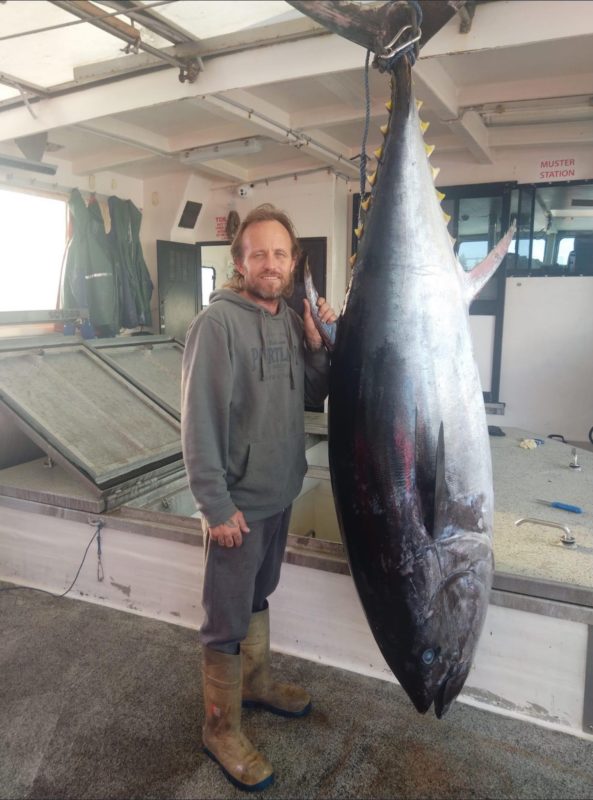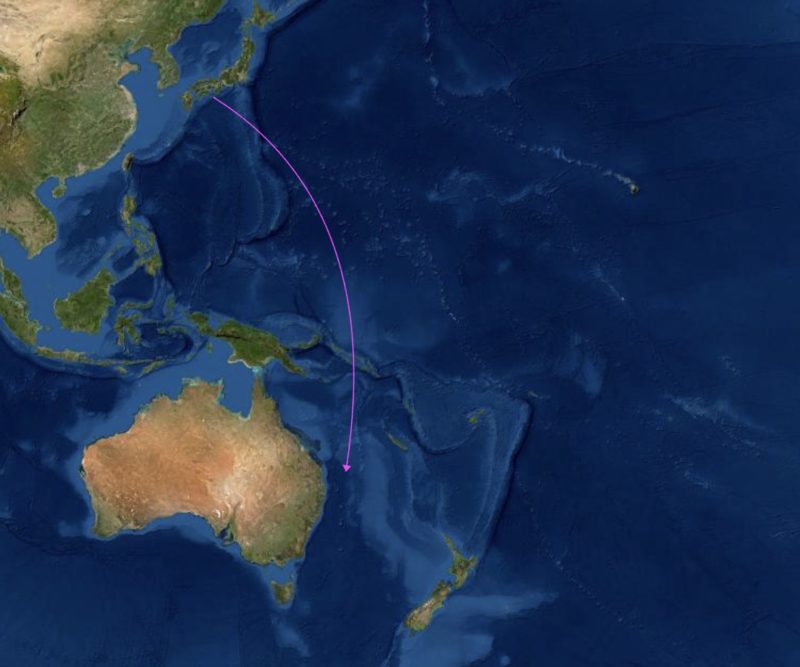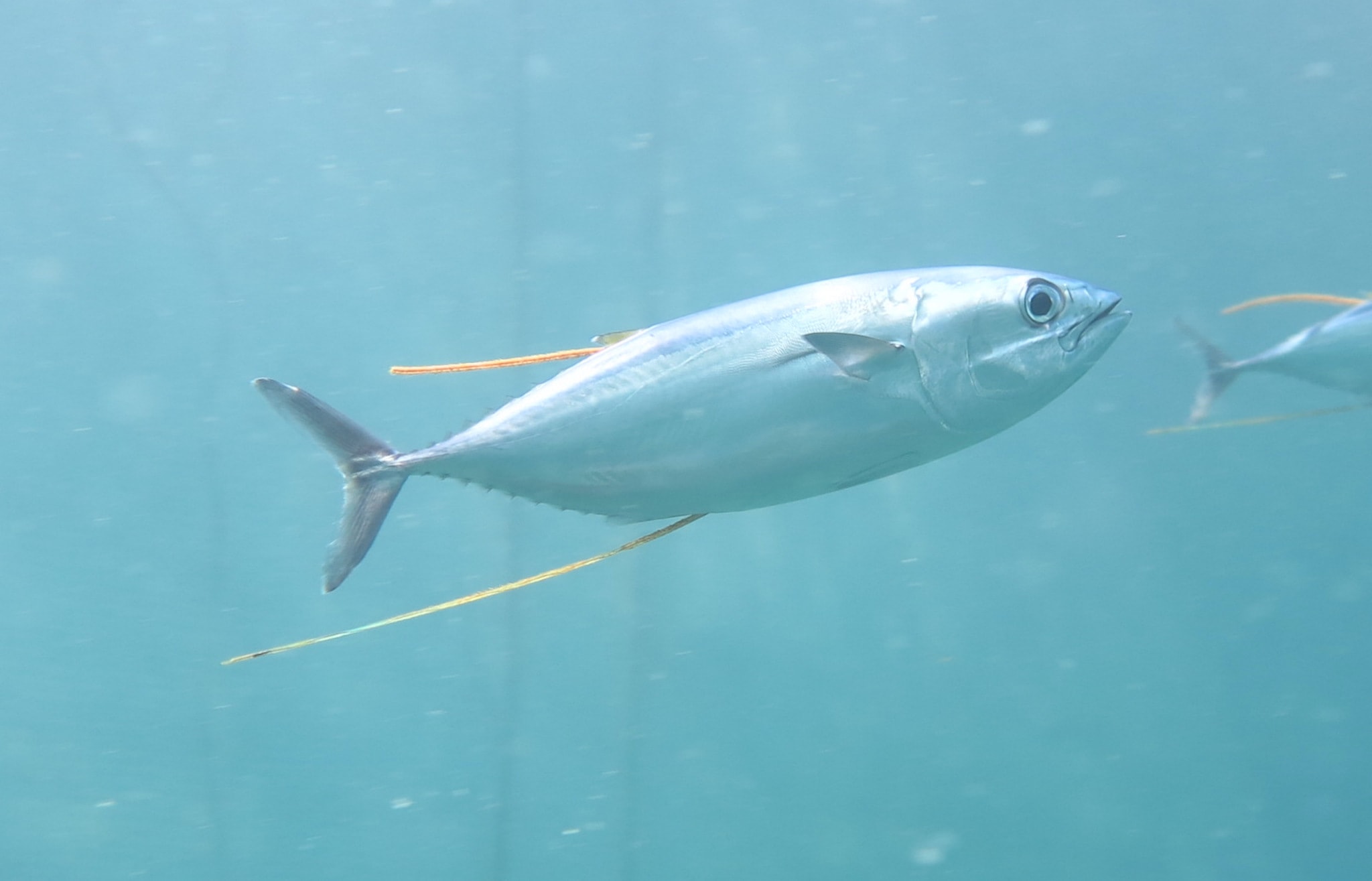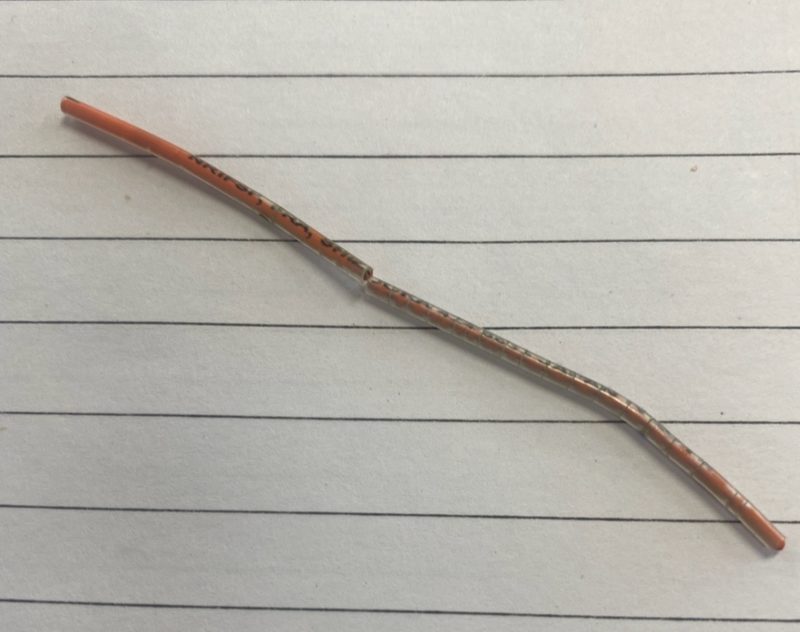‘Amazing story’: Northern Pacific bluefin tuna recaptured off Sunshine Coast nine years after being tagged in Japan
Have you heard this remarkable tag and recapture story?
On 23 July 2012, a baby Pacific bluefin tuna was tagged in the coastal waters of Kochi Prefecture, Japan, by the Japanese Fisheries Research and Education Agency. The three-month-old tuna weighed 200 grams and measured just 23.5 cm from snout to tail fork.
Over nine years later, on 5 September 2021, the same tuna was caught by an Australian tuna longline vessel in the Coral Sea, around two hundred nautical miles (370 kilometres) east of the Sunshine Coast.
The tuna weighed 158 kg, once gilled and gutted, so was likely around 175 kg whole weight. It measured 223 cm from snout to tail fork—ten times its original length.

Skipper Bo Lloyd of Walker Seafoods Australia was the one who caught and reported the tuna, after noticing a plastic tag with a Japanese address at the base of the dorsal fin.
Walker Seafoods owner Pavo Walker shared the tag details with marine scientist Dr. Julian Pepperell, who contacted the Japanese researcher involved in the tagging program, Dr. Ko Fujioka.
“This is great news!” wrote Fujioka to Pepperell on hearing about the recapture.
“This is the first record of a fish being recaptured in Australia after a long period of free swimming.”
‘Extremely rare’
Since 2011, over 12,000 baby Pacific bluefin tunas have been tagged by Japanese scientists.
Results show that the species mainly travels across the northern Pacific to the US coast and back as they grow in their first few years of life.
However, this is the first ever Pacific bluefin tuna (a northern hemisphere species) recaptured in the southern hemisphere and by far the longest time between tagging and recapture.
“Long-term recaptures don’t happen very often because the tags don’t always last in the severe marine environment, and also due to natural mortality among fish,” said Pepperell.
“The chance of a fish living to nine years old, being caught with the tag still in it, the fisherman seeing the tag and the tag finding its way back to researchers is extremely rare.
“That’s what makes this such an amazing story.”

The earbones (otoliths) of the recaptured tuna were extracted and given to CSIRO, enabling marine scientists to determine that the recaptured tuna was exactly nine years old.
“Fish lay down rings on their ear bones every year—like tree rings—providing scientists with a way to estimate the age of a fish,” said Pepperell.
Now, the recaptured tuna’s earbones will act as ‘Rosetta stones’ for verifying the estimated ages of many other Pacific bluefin tuna from otoliths that have been collected over many years.
“WOW!!”
The story has been shared hundreds of times on social media, drawing a huge response from the public.
“My Facebook post about the recaptured tuna has been liked nearly 1,800 times, shared over 650 times and received more than 360 positive comments,” said Pepperell, who was also interviewed by ABC Radio on the Sunshine Coast.
“So much knowledge from a single event… fantastic”, “Wow and I mean WOW!!”, and “That’s so amazing” were some of the responses from the general public to Pepperell’s post.
The story was also posted on social media by South Australian fish tag company, Hallprint, who manufactured the tag found in the recaptured tuna.
“[The recapture] represents a straight-line distance of nearly 7,100 kilometres and a time at liberty of just over nine years,” wrote Hallprint Director David Hall.
“Needless to say, the Japanese scientists are pretty happy with the longevity of Hallprint's small plastic tipped dart tags!”

Vital for research
In Australia, tagging programs have been running for more than 40 years.
“Tag and recapture programs are incredibly important in Australia and worldwide for doing stock assessments and biomass estimates, and understanding migration patterns,” said Pepperell.
The Australia-wide Gamefish Tagging Program, operated by the NSW Department of Primary Industries, is close to logging 500,000 fish tagged by more than 60,000 recreational anglers. The main species include marlin, sailfish, tunas, sharks, yellowtail kingfish and dolphinfish.

The recovered tag will be returned to the manufacturer, Hallprint. Photo by Walker Seafoods.
There have been several amazing tag and recapture stories, said Pepperell.
“For example, a blue marlin that was tagged north of Sydney was recaptured one-and-a-half years later off the south coast of Sri Lanka—a minimum distance of 10,200 km. The fish swam from the Pacific to Indian Ocean presumably via Indonesia—the longest recorded distance for blue marlin.”
“And then there was a small black marlin tagged off Cairns which was recaptured four years later by a coastal longline vessel all the way across the Pacific off the coast Costa Rica, clocking up a minimum swim of 14,400 km,” he said.